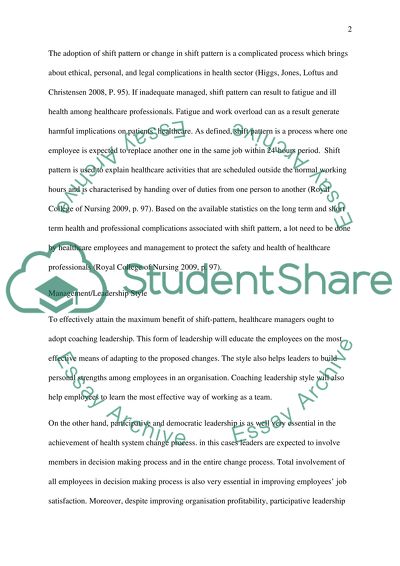Cite this document
(“Management in Health Care - Shift patterns Essay”, n.d.)
Retrieved from https://studentshare.org/health-sciences-medicine/1402749-management-in-health-care-shift-patterns
Retrieved from https://studentshare.org/health-sciences-medicine/1402749-management-in-health-care-shift-patterns
(Management in Health Care - Shift Patterns Essay)
https://studentshare.org/health-sciences-medicine/1402749-management-in-health-care-shift-patterns.
https://studentshare.org/health-sciences-medicine/1402749-management-in-health-care-shift-patterns.
“Management in Health Care - Shift Patterns Essay”, n.d. https://studentshare.org/health-sciences-medicine/1402749-management-in-health-care-shift-patterns.


